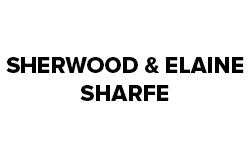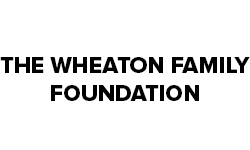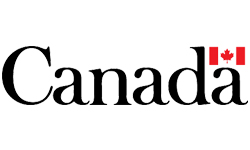Part B: Learning Plan
In this inquiry students will:
- Understand that rules have different purposes and are made by different organizations.
- Recognize how rules bring order and help people to get along.
CITIZENSHIP INQUIRY
Why do we have rules? Could we live without them?
Curricular Outcome
Students will:
- Understand and respect the agreed upon rules of the classroom, playground, and school, and recognize that rules and expectations are designed to promote a state of safety, self-regulation, peace, balance, and harmony. (PAK.1)
Know and follow their home, classroom, school rules and understand that rules help to make people safe and get along.
Essential questions discussed with students at the start of the exploration of study. These open-ended questions encompass concepts that students will explore throughout the unit of study and will form the evidence of understanding at the end of the unit.
QUESTIONS TO GUIDE INQUIRY
Essential Questions: Guiding Questions
- What makes a rule fair?
- Does everyone think rules are fair?
- Why are rules different from place to place?
- How are rules different?
- How do rules help people live peacefully together?
- Why are rules made?
- How do rules change?
- What is a citizen?
Vocabulary
Common Good
- good for all
Rule
- principle governing conduct
Rights
- entitlement or freedom
- morally appropriate thing
Responsible, responsibility
- accountable, accountability
- answerable to somebody
- reliable
Engaged Citizen
- involved, active
Fair
- reasonable, just, impartial, rational
CONNECT TO TOPIC AND SURFACE STUDENTS’ THINKING ABOUT …
Process
- Pose the essential and guiding questions and allow students to discuss their thoughts on the matter.
- Determine what the students know, understand, need to be able to do to master/answer the essential questions (connect to content). Additional guiding questions can be added as required. Students are encouraged to add their questions to the others.
- Create Know, Want to know, Learned Chart – identify vocabulary that requires development.
- Surface any additional questions students might have as a result of their discussions about the essential questions.
- Put the responses into a “Before, During, After” chart and post student answers for reflection at end of study to note changes in thinking.
- Have students identify some classroom rules, move to school, home rules, government rules i.e. speed limits, seat belts.
- List rules and look for similarities and differences between rules and setting or sphere of influence of rule.
- Why do we have rules that are the same regardless of setting?
- Try to identify reason or purpose of rules – information, safety.
- Surface what students think is their responsibility to follow rules.
- Connect learning outcomes to previous learning/ future learning.
- Connect to symbols discussion and categories of symbols and how symbols call upon rules of behavior.
- Students will use their learning to identify:
- rules – their origins and purpose
- behaviour that follows and does not follow rules
- consequences of following and not following rules
- think about the impacts of rules
DEVELOPING UNDERSTANDING
- Develop understanding of consequences of following/not following rules.
- Revisit charted rules according to location or setting i.e. classroom, home, school, government and compare against chart for purpose .
- Talk with students about what happens when people do not follow rules.
- danger, issues of safety, order / getting along
- Develop understanding of consequences of following/not following rules.
- Revisit charted rules according to location or setting i.e. classroom, home, school, government and compare against chart for purpose .
- Talk with students about what happens when people do not follow rules.
- danger, issues of safety, order / getting along
- Develop understanding of what rule makers must consider when making rules.
- When do students make rules? List those rules. Do students have any personal rules?
- Why do students make rules? What do they think about when making the rules?
- Talk with students about who makes the rules that are listed, in the classroom, school, home, government.
- Discuss with students what rule maker might have been thinking when rule was made – speaks to purpose of rules.
- Are there rules that are applied differently to different people?
- i.e. going to bed, going to a friend’s house, being alone
- Have students vote on which rules seem fair or reasonable. (majority rule process)
- Have students improve rules that do not seem fair. (consensus building)
APPLY AND EXTEND KNOWLEDGE
This section includes ideas to extend the inquiry or apply concepts explored. This section may also include additional reflective questions to promote student connection to the topic. This forms the “You do” section of the inquiry – may be “you do it collaboratively” or “you do it alone”. Invite students to extend their thinking beyond the classroom discussions and inquiry experiences. Pose additional reflective questions that have been raised to encourage critical and creative thinking.
Describe situations without rules i.e. birthday party, community gathering if people didn’t follow rules – Would everyone be happy? Might some be sad?
- Think of behaviours such as running, singing, talking, whispering, etc. and think of times when it is appropriate/not appropriate to do those things.
- Develop understanding that appropriate behaviour differs depending upon the setting.
- i.e. the agreed-upon rules of the classroom, playground, and school, and recognize that rules and expectations are designed to promote a state of safety, self-regulation, peace, balance, and harmony.
- Is there ever a time when it is okay to break a rulei.e. when someone is injured, when someone is feeling scared or threatened?
- Have student develop their own “rules” or guidelines about when this might be acceptable.
- What do students have to think about when making rules? (common good)
- Review student answers at the start of the inquiry. Has thinking changed? Why?
- Why is this information important to understand?
- What will you do with this learning?
EVIDENCE OF LEARNING
This section suggests ways in which students may demonstrate their understanding. Ideal demonstrations will be in authentic performance tasks. Each citizenship study may have its own smaller assessment piece or be compiled to supportone larger performance task assessment. Assessment pieces vary, but should allow students to demonstrate their understanding in a variety of ways. Demonstrations of understanding may be done collaboratively or independently.
Design your own rules
- Have students choose one of the scenarios and develop rules for that scenario.
- Visiting someone who was sick or in a hospital, medical center.
- Riding in a canoe, on an escalator, etc.
- Humpty Dumpty’s caregivers.
- Visiting Elders, grandparents i.e. kokum, nana.
- Other.
- Discuss 2-3 rules that student would make and why they would make the rules.
- Explain thinking or reason for rule and why they think that rule is fair.
- i.e. sometimes you need to make different rules for different situations or have student tell what might happen if rule was not followed.
STUDENT CITIZENSHIP JOURNAL OPPORTUNITIES
- Why do you follow rules? Why is this important?
- Draw pictures of some safety rules. Tell why they are important.
Learning Plan
In this inquiry students will:
- Understand that sometimes people do not always agree
- Understand that people can view the same situation quite differently
- Look for ways to resolve differences of opinion
Can people disagree and still get along with one another?
Curricular Outcomes
Students will recognize situations in which disagreement may be part of living, studying and working together, and that resolution may be an avenue to progress to a state of peace, balance, and harmony. (PAK.2)
Student friendly outcome for posting
Students will learn how to handle times when they do not get along with someone and learn that it is better to try and fix a problem rather than not trying to fix it.
Essential Questions: Guiding Questions
- How do I live and work beside people who think differently from me?
- What causes a person to have a different understanding of the same situation?
- How can I understand another person’s point of view?
- Do we all have to like the same thing? Can people disagree and still live/work together?
- What happens to your body when you disagree with someone?
- How do you talk to someone that you disagree with?
- How do you behave to someone that you disagree with?
Vocabulary
- Point of view
- Conflict
- Cooperate
- Resolve
- Bully
CONNECT TO TOPIC AND SURFACE STUDENTS’ THINKING ABOUT …
This section introduces the concepts and helps teachers gain an understanding of the current thinking of the class. Present essential questions and allow students to think about and talk about. Student answers will give teachers a baseline or beginning understanding of the amount of specific and incidental teaching required to explore these outcomes. Vocabulary is introduced and noted here. This section frames the “We do” portion of the lesson where teachers guide the initial structure of the inquiry.
Teacher Note:
It is important to understand and be aware of conversation when students talk about differences or diversity. This should be done without identifying one culture, race or situation as better than another. Diversity is difference and does not signify superiority.
Process
- Pose the essential and guiding questions and allow students to discuss their thoughts on the matter.
- Determine what the students know, understand, need to be able to do to master/answer the essential questions (connect to content). Additional guiding questions can be added as required. Students are encouraged to add their questions to the others.
- Create Know, Want to know, Learned Chart – identify vocabulary that requires development.
- Surface any additional questions students might have as a result of their discussions about the essential questions.
- Post student answers for reflection at end of study.
Essential questions are given to students at the start of the exploration of study. This is what students will explore throughout the unit of study and will also be the questions they will be required to answer at the end of the unit of study.
- Check vocabulary understanding – point of view, disagree.
- Talk with students to gather their ideas about solving problems.
- Connect learning outcomes to previous learning/ future learning. Connect to:
- Diversity: different cultural backgrounds and points of view.
- Students will use their learning to understand that:
- people can disagree and still live and work together
- people can have different points of view about the same topic
- there are different processes to solve disputes
- Find a story about disagreement between friends or neighbours, boys-girls, animals, etc.
- Identify two points of view in the story and how situation was resolved. (Suggestions below are a starting point)
- Let’s Be Enemies – Janice May Udry
- James and John are best friends –or at least they used to be. They sharedpretzels, umbrellas, and even chicken pox. Now James always wants to be boss, and John doesn’t want to be friends anymore. But when he goes to James’ house to tell him so, something unexpected happens.
- Clancy’s Coat – E. Bunting
- This book deals with numerous misunderstandings between friends. Two old friends in dispute over one’scow trampling the other’s garden come to understand each other’s feelings about the things they cherish. They are able to rekindle their friendship by talking and sharing.
- Others
- Let’s Be Enemies – Janice May Udry
DEVELOPING UNDERSTANDING
This section is the core of the lesson. It describes the main activity(ies) involved. In inquiry-based learning, the teacher facilitates the activities that lead to the understandings that student make of the essential questions. It is critical then, that students be allowed to raise questions and talk about issues that develop as they explore the learning activities. This forms the “We do” “They do” section of the inquiry where students are finding answers to the overarching questions and then searching for themes and patterns as possible explanations.
Schools with conflict resolution strategies or policies already in place should use those programs to develop conflict resolution skills with students.
- Develop ability to determine emotions in others and use appropriate words to describe feelings
- Have students look at pictures of people that are displaying emotions i.e. happy, sad, angry, surprised, scared, disgusted, worried, frustrated, etc.
- Check to see that all students can identify appropriate emotion expressed.
- Have students’ role play certain emotions and have students identify emotion.
- Link emotions to appropriate activities – happy when reading with caregivers, sad when grandparents leave, frustrated when can’t button coat or reach something up high.
- Identify how characters in initial story felt during disagreement and afterwards.
- Have students identify thinking and give reasons for their answers.
- Develop strategies for resolving conflicts
- Have students identify times when they might have had a disagreement with a sibling, caregiver/parent, or friend and talk about how they felt.
- Identify strategies students used to resolve conflict.
- Surface feelings about how student felt afterwards – better or still upset/confused, etc.?
- Health curriculum (connection to traffic light graphic)
- Red – Stop – calming down, reflect on personal feelings
- Yellow – Think – gather information – how is other person feeling
- Green – Do – communicate, do something with new information
- Revisit essential question – What story is my behaviour telling?
- Red
- calming down – have students take 3 deep breaths
-
describe feeling – I am feeling… because…
- Yellow
- describe other person’s feeling – X is feeling… because
- Green
- say what you want to happen
- ask other person what they want to happen
- Debrief
- Talk about how student felt at end of situation.
- describe emotions
- What would they do next time?
APPLY AND EXTEND KNOWLEDGE
This section includes ideas to extend the inquiry or apply concepts explored. This section may also include additional reflective questions to promote student connection to the topic. This forms the “You do” section of the inquiry – may be “you do it collaboratively” or “you do it alone”. Invite students to extend their thinking beyond the classroom discussions and inquiry experiences. Pose additional reflective questions that have been raised to encourage critical and creative thinking.
- Develop understanding of ways in which people cooperate in order to solve problems and/or live peacefully. (Connection to acting like a citizen)
- Have students identify times when they worked with someone to solve problem i.e. worked with cousin to help younger child, Acts of Kindness
- Surface emotions about how that felt; why did they do that?
- Think about times when they could not get along with someone? What might they do differently now?
- Interview school leaders, caregivers/parents, community leaders about times when they:
- worked cooperatively with someone to solve a problem or live peacefully
- had to follow a rule(s) that they didn’t totally agree with
- couldn’t get along with someone but now have an idea of something they might do differently
EVIDENCE OF LEARNING
- How do I live and work beside people who think differently from me?
- Can people disagree and still work/live together?
- Teachers can choose a situation or have students choose a situation to demonstrate.
- Students may demonstrate in a manner appropriate to age/ability but must show:
- How do I live and work beside people who think differently from me?
- Can people disagree and still work/live together?
- Teachers can choose a situation or have students choose a situation to demonstrate.
- Students may demonstrate in a manner appropriate to age/ability but must show:
- Problem solving strategy
- Examples of Cooperation
- Situations in which people with different points of view interact harmoniously together.
- Students may demonstrate in a manner appropriate to age/ability but must show:
- What did I learn about getting along with people?
- What does this information tell me about being a citizen?
- Why is it important to know this?
- What will I do with this new learning?
- Students may demonstrate in a manner appropriate to age/ability but must show:
STUDENT CITIZENSHIP JOURNAL OPPORTUNITIES
Students are keeping a Citizenship Journal to reflect upon their developing views of citizenship. This section provides prompts for student journals. Students are invited to choose one that interests them or propose their own. Students can also respond to any of the essential questions.
Students are encouraged to respond using a variety of genres.
- What makes a person a friend? What kind of a friend are you? Tell why you think this.
- Draw pictures of a time when you helped someone. How did it make you feel?
- What is a citizen?
© 2024 Concentus Citizenship Education Foundation Inc. All Rights Reserved.










